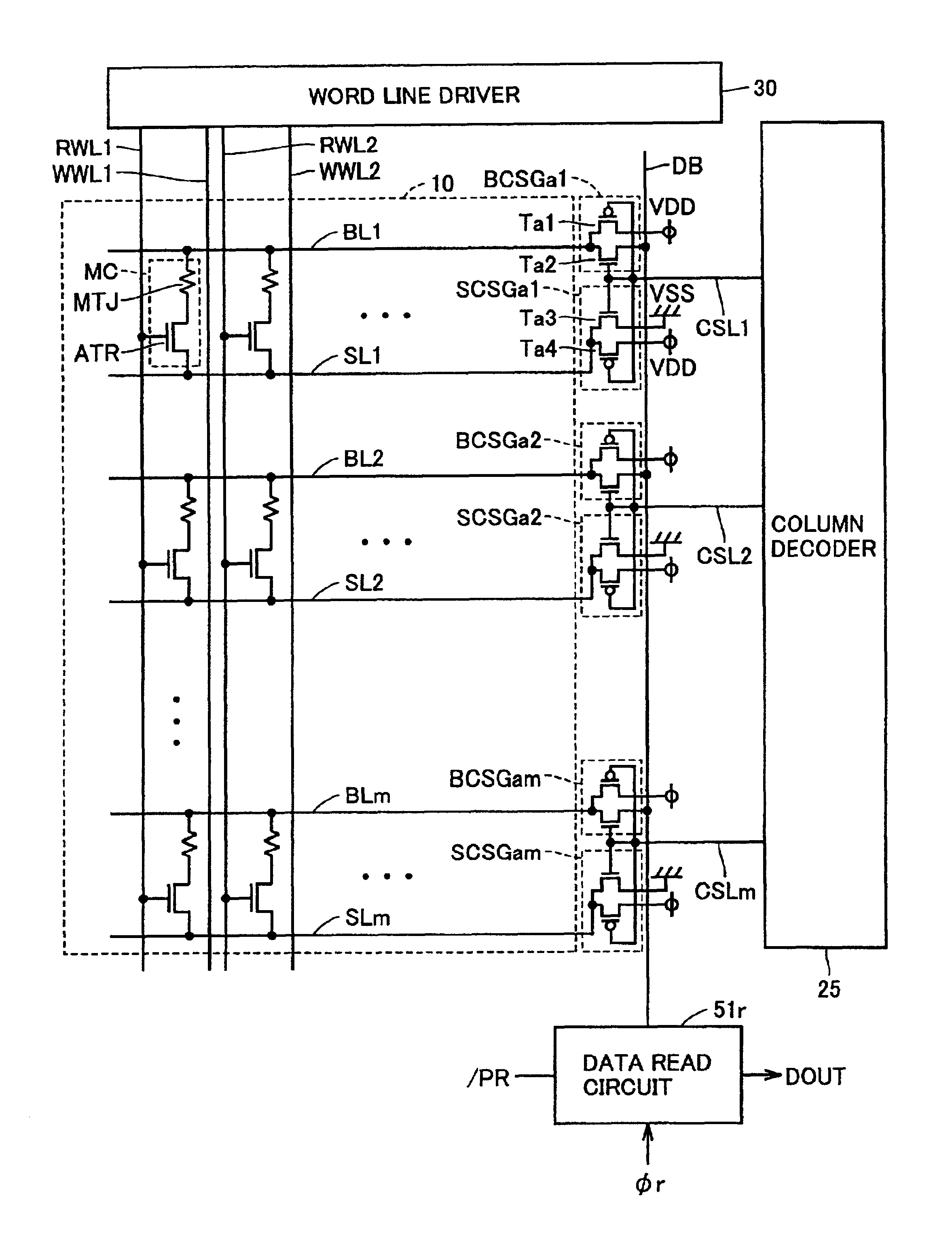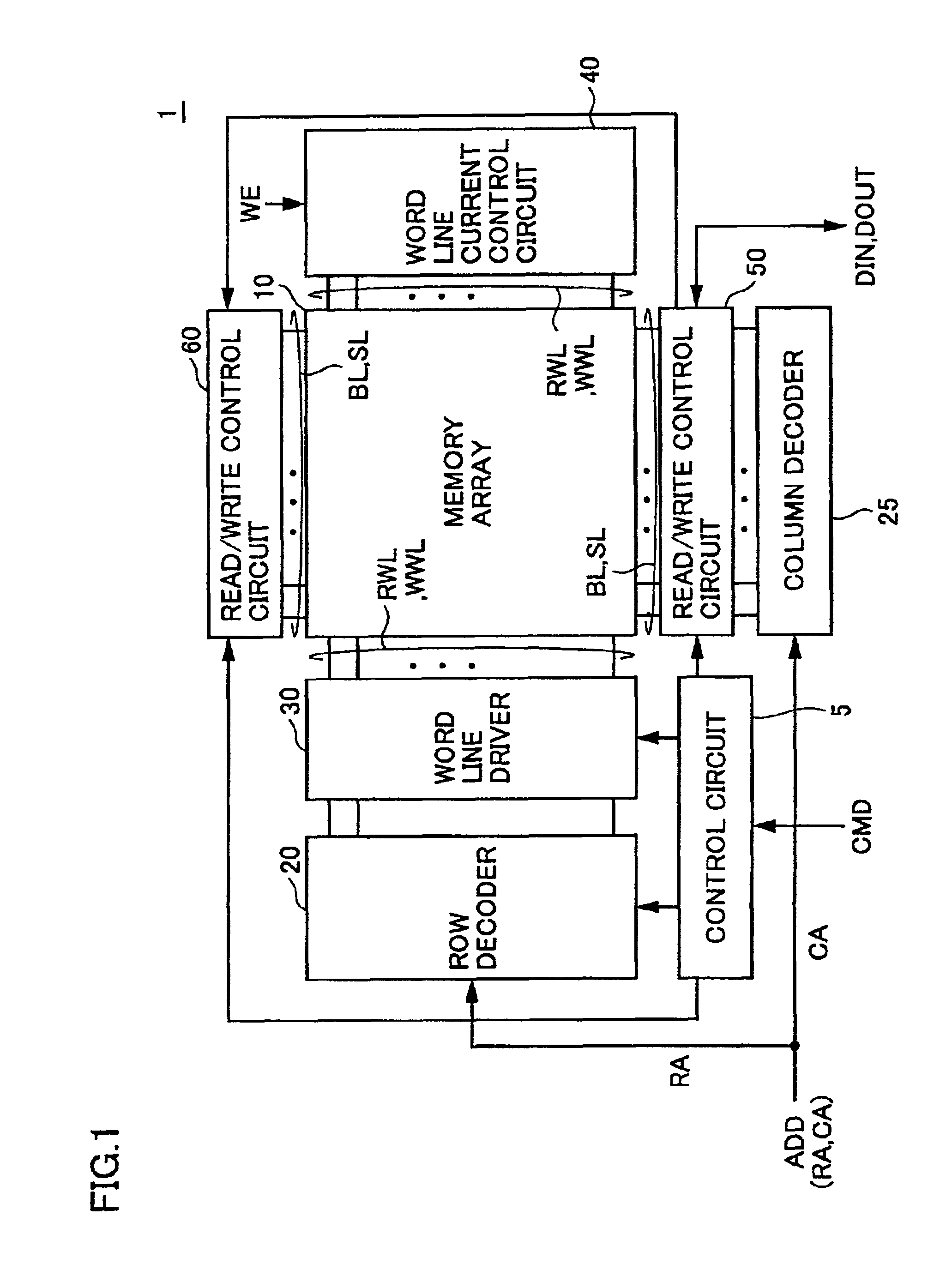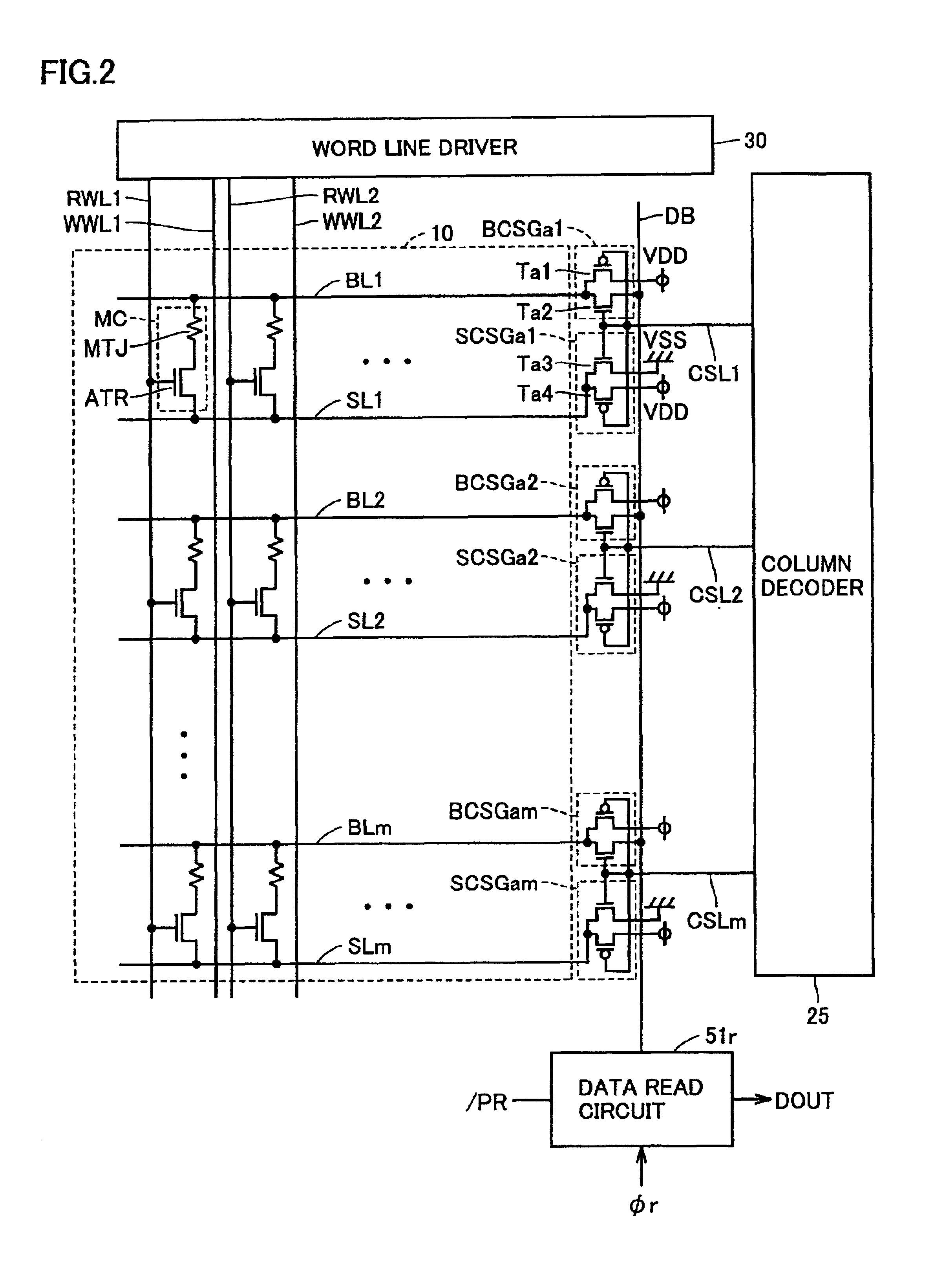Thin film magnetic memory device having a magnetic tunnel junction
- Summary
- Abstract
- Description
- Claims
- Application Information
AI Technical Summary
Benefits of technology
Problems solved by technology
Method used
Image
Examples
first embodiment
Referring to FIG. 1, an MRAM device 1 according to a first embodiment of the present invention conducts random access in response to an external control signal CMD and address signal ADD, thereby receiving write data DIN and outputting read data DOUT.
The MRAM device 1 includes a control circuit 5 for controlling the overall operation of the MRAM device 1 in response to the control signal CMD, and a memory array 10 having a plurality of MTJ memory cells arranged in a matrix. Although the structure of the memory array 10 will be specifically described below, a plurality of write word lines WWW and a plurality of read word lines RWL are provided respectively corresponding to the MTJ memory cell rows. Bit lines BL and source lines SL are provided respectively corresponding to the MTJ memory cell columns.
The MRAM device 1 further includes a row decoder 20, a column decoder 25, a word line driver 30, a word line current control circuit 40 and read / write control circuits 50, 60.
The row dec...
second embodiment
The structure for supplying a data write current so as to stabilize the data write operation to the memory cell will be described in the second embodiment.
Referring to FIG. 15, in the second embodiment, the memory cells MC, read word lines RWL, bit line pairs BLP, source lines SL and the like in the memory array 10, and the circuitry associated with the data read operation have the same structure as that of FIG. 13. Therefore, detailed description thereof will not be repeated.
FIG. 15 additionally shows a word line current control circuit 40 for supplying a data write current, and a data write circuit 51w. Bit line coupling transistors 62 are provided respectively corresponding to the bit line pairs. The bit line coupling transistors 62 are provided in the region located opposite to the bit line selection gates BCGSb and the source line selection gates SCSGb with the memory array 10 interposed therebetween. FIG. 15 exemplarily shows a bit line coupling transistor 62-1 corresponding t...
third embodiment
The structure for efficiently supplying a data write current is described in the third embodiment.
Referring to FIG. 25, in the structure of the third embodiment, a memory array 10 includes memory cells MC arranged in n rows by m columns. In the memory array 10, read word lines RWL1, RWL2, . . . and write word lines WWL1, WWL2, are provided respectively corresponding to the memory cell rows. Bit lines BL1 to BLm and source lines SL1 to SLm are provided respectively corresponding to the memory cell columns.
The word line current control circuit 40 couples each write word line WWL to the ground voltage VSS in the region located opposite to the word line driver 30 with the memory array 10 interposed therebetween.
A data bus pair DBP of data buses DB, / DB is provided in a region adjacent to the memory array 10 so as to extend in the same direction as that of the read word lines RWL and the write word lines WWL.
Column selection lines CSL1 to CSLm, write column selection lines WCSL1 to WCSLm...
PUM
 Login to View More
Login to View More Abstract
Description
Claims
Application Information
 Login to View More
Login to View More - R&D
- Intellectual Property
- Life Sciences
- Materials
- Tech Scout
- Unparalleled Data Quality
- Higher Quality Content
- 60% Fewer Hallucinations
Browse by: Latest US Patents, China's latest patents, Technical Efficacy Thesaurus, Application Domain, Technology Topic, Popular Technical Reports.
© 2025 PatSnap. All rights reserved.Legal|Privacy policy|Modern Slavery Act Transparency Statement|Sitemap|About US| Contact US: help@patsnap.com



